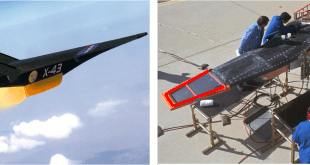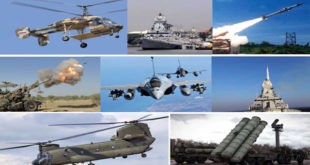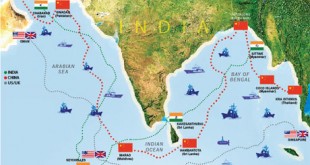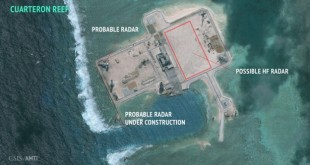Israel is a high-tech superpower and one of the world’s top weapons exporters with approximately $6.5 billion in annual arms sales. Since 1985, for example, Israel is the world’s largest exporter of drones, responsible for about 60 percent of the global market, trailed by the US, whose market share is under 25 percent. Its customers are everywhere — Russia, South Korea, Australia, France, Germany and Brazil.
Israel faces continuing threats of Hamas’ underground terror tunnel network in Gaza and from terrorists in Judea and Samaria, attempting to smuggle weapons through crossings and attack Israeli communities. The border with Gaza is one of Israel’s most tense region. Hamas snipers, anti-tank missiles and explosives threaten IDF soldiers whose job it is to patrol the security fence on the border.
The increasing use of robots by the Israel Defense Forces is part of a larger strategy to minimize risk to soldiers when possible. In addition, soldiers require breaks, food and water. All a Guardium needs is a full tank of gas. Other UGVs in use by the IDF include the Segev, which is based on a Ford F-350 pickup truck.
The Guardium is a part of a new category of robotic weapons known as Unmanned Ground Vehicles or UGVs. Israel is the first country in the world using these robots to replace soldiers on missions like border patrols. Already, Guardium UGVs are deployed along Israel’s border with Syria in the north and the Gaza Strip in the south.
Tel Aviv, Maj.-Gen. (res.) Eyal Ben Reuven revealed that the IDF’s 7th Armored Brigade had become one of, if not the first ground force in history to train side-by-side with “advanced ground robotics. “The IDF is the first army in the world to operationally deploy robots to secure the border, gather tactical intelligence, clear roads, and to engage in urban warfare, according to Lt. Colonel Leon Altarac, Head of Robotic Section, Ground Force Command’s Technological Division.
Facing terrorists who use tunnels to infiltrate into Israel from places like the Gaza Strip, Israel is also relying on UGVs like robotic snakes to slither into underground passageways and enemy headquarters. The robots will then map out the structures, giving soldiers an accurate picture of a battle area before the place is stormed.
Unmanned weapons systems will be integrated into the Israel Defense Forces’ future land battles, said the defense establishment’s chief technological officer, Ophir Shoham: “Within a few years there will be a number of operational missions of a known character that we will be able to carry out with a small number of unmanned devices,” he says. “That is the direction we are taking. The IDF is currently looking into deploying swarms of robots to various missions.
US’s TARDEC, soon to be part of the new Army Futures Command, is exploring a wide range of Israeli robots. IAI is already looking into the next generation: “flocks” or swarms of robotic systems that communicate with each other and collaborate to accomplish their mission.
Israeli company which makes military robot systems has won a tender worth $10 million with the Italian government to supply the country’s military police with tactical ground robotic systems.
Roboteam will team with Italian contractor BMD Spa to supply the Carabinieri with 40 Transportable Interoperable Ground Robot (TIGR) systems with various payloads, including training and maintenance services, the company said in a statement.
Weighing about 80 kg., the TIGR can handle suspicious packages, hazardous materials and intelligence gathering. Highly maneuverable on all type of terrains and conditions, it has an advanced arm which has 6 degrees of freedom (DOF) and with high lifting capacities.
The system also has advanced photographic and observation capabilities with thermal vision so it can operate both in daylight and at night for intelligence, surveillance and reconnaissance missions. According to Roboteam, the TIGR was launched last year and this is its first win in an open tender.
“The TIGR joins the company’s list of robotic solutions that have already won a number of tenders worldwide and are in ongoing operational use,” Roboteam said in a statement adding that the deal with Italy comes after other tender wins the firm has had in recent weeks in Japan, Korea and “additional countries.”
“We are proud that the Italian government has chosen the TIGR advanced robotic system that we developed,” said the company’s CEO Elad Levy. “Winning the tender demonstrates that this new and innovative system enables the user, in the most efficient and effective manner – advanced operational capabilities that saves lives under the challenges and threats facing the forces all over the world.”
The company, which focuses on the manufacturing of advanced military robotic systems was founded in 2009 by Yossi Wolf and Elad Levy, and employs dozens of employees in Tel Aviv, Israel and Maryland in the United States.
According to the company, all of their robotic systems have been developed to meet all the advanced American JAUS/IOP standards, which enable a generic connection of devices on the systems according to a specific task they are required to person, such as sensors for the detection of hazardous materials in case of nuclear or biologic events.
“A significant component of the systems is software and algorithms. These enable the system operator to intuitively perform advanced and complex operations on the battlefield, by using the autonomous capabilities of the systems to manage an array of autonomous capabilities consisting of a large number of platforms and sensors,” the statement said. The company has sold its products in more than 20 countries across the world, including the US, Israel, Australia, Thailand, Singapore, the UK, Switzerland, Japan, Korea, and now, Italy.
US Army Pursues Israeli Robots
TARDEC, soon to be part of the new Army Futures Command, is exploring a wide range of IAI robotic systems, “We consider the US Army a big potential customer,” retired Maj. Gen. Gadi Shamni, IAI’s VP for land systems and the former Israeli defense attaché in the US, said in an exclusive interview. “They have been briefed in Israel and saw the systems in action in the US.”
Shamni said: counter-IED bots to handle roadside bombs; robotic mules to follow infantry soldiers with extra supplies; “leader-follower” systems where manned vehicles lead unmanned ones in convoy; engineering robots to bulldoze obstacles under fire; optionally manned vehicles that can switch to unmanned operation “in seconds”; and even armed robots. All these systems, he said, can either be remotely controlled by human operators or switch into a fully autonomous mode where they make decisions based on what their sensors see and what instructions the humans gave them before the mission.
But IAI is already looking into the next generation: “flocks” or swarms of robotic systems that communicate with each other using Internet Of Things (IOT) technology and collaborate to accomplish their mission. The US Army and other potential users want robots that can react in real time to immediate threats, Shamni said: “This requires operational decisions to be made in the front line and not in remote command centers, (using) robotic systems that are interconnected and can assist each other (in) fast changing conditions.”
Already, Shamni said, IAI is designing many of its ground robots to work with or even launch its combat-tested mini-drones and loitering munitions such as Harop (Harpy) and Green Dragon. With such robotic technologies likely to be be implemented on a “massive” scale, he said, “it opens operational opportunities that are now considered a wild dream.”
A lifesaving Israeli combat robot
Defense Ministry, IAI, have developed a highly maneuverable combat robot that will be able to carry out missions alongside ground troops, neutralize and warn forces regarding hidden threats on the battlefield. The development stage of the SAHAR system – a ground robotic engineering scout – has been completed by Israel’s MoD Defense Research and Development Directorate (DDR&D, MAFAAT), the testing stage is underway. The SAHAR system was designed for a wide range of operations in various arenas, focusing on coping with the challenge of explosive charges. The system is one of the elements of the robotic front guard which offers various capabilities.
The system consists of three components. The first consists of a six-ton robot platform capable of maneuvering alongside an armored combat vehicle with or without an operator’s intervention. The second component is technological, including the robotic kit, a system with a variety of means of sensing, smart cameras, laser sensor, scanner and radars. The system can map a known obstacle in advance and through pre-programmed logic, overcome it.
The third component of the robot developed by Israel Aerospace Industries is the task component: when the device identifies a danger, it transmits a warning report to the forces operating in the field about its exact placement.
Guardium Unmanned Ground Vehicle (UGV), Defender of the Gaza Border
To counter these threats, the IDF has employed the Guardium Unmanned Ground Vehicle (UGV), has been patrolling Gaza border since past six years around the clock along with Infantry soldiers. The Guardium is based on a Tomcar dune-buggy-like vehicle and equipped with a range of sensors, cameras and weapons. It can be driven by a soldier sitting in a command center miles away or receive a pre-designated route for its patrol, making it completely autonomous.
Equipped with 360 degree cameras and a loudspeaker, Guardium, enables detecting threats from a distance by streaming images from various angles. If it spots something suspicious, the soldiers in the command room immediately notify the foot soldiers in the field of the danger.
Guardium will be replaced by a UGV called “Border Protector”, that will have the ability to patrol borders and deliver weapons and other paramount items to soldiers in the battlefield. The vehicle based off a modified Ford 350 vehicle, will be able to operate in any kind of weather, operating autonomously along the border fence and transmitting images and data back to headquarters. If anything seems amiss, a battalion of soldiers can be sent in to deal with the problem. Otherwise, soldiers could remain on alert, away from the danger zone.
Relieving the extreme weight load on the dismounted soldier, the Guardium MK II™, a versatile – multipurpose autonomous unmanned round vehicle, replenishes forward troops with up to 300 kg of ammunition and supplies without endangering manned vehicles over IEDs stricken routes. An offspring of the operational Guardium UGV™, he Guardium MK II™ equips the warfighter with robust toolkit for a variety of operational scenarios as route proving, base protection, ISTAR and combat logistic support.
Another is the Loyal Partner, an armor patrol carrier (APC) Hummer-type vehicle that will carry weapons and devices to soldiers in the field. It can remain in the field for long periods of time while identifying bombs and the source of gunfire. It is controlled from a nearby base station by joystick and mouse controls, making it capable of traversing rough terrain and able to remain stable while ascending or descending steep hills. The groundbreaking technology will allow soldiers to understand the exact appearance of any structure, helping them avoid the dangers of underground or urban combat.”
https://www.youtube.com/watch?v=TWKmemlLfRU
RoBattle: multi terrain modular robot
RoBattle is a six-wheeled unmanned ground vehicle (UGV) developed by Israel Aerospace Industries (IAI) and can be modified with different equipment and weapons according to the mission at hand. The RoBattle is designed to complete whole array of missions, including reconnaissance, surveillance, fire support and convoy protection.
To implement the missions, the 7 metric ton vehicle features a modular design; its components can easily be swapped out to enhance functionality. For example, RoBattle’s tyres can be switched for tank tracks, allowing it to tackle pretty much any terrain, meanwhile it can also be kitted out with various sensors, vehicle control, navigation and real-time mapping.
According to IAI, operators can equip RoBattle with different payloads like “manipulator arms”, intelligence, surveillance and reconnaissance (ISR) sensors and radars, and remotely controlled weapons. As a result, the UGV is equally suited for intelligence, surveillance and armed reconnaissance missions, as well as convoy protection, decoy, and ambush and attack operations, said IAI.
The vehicle can climb to a height of one and a half meters and lower itself to a visible height of 60 centimeters in order to evade enemy fire. Also, the robot can operate up to 12 hours without recharging while in “ambush mode”, which includes tracking and responding settings. RoBattle is the latest robot in IAI’s family of UGVs which also includes Sahar, an autonomous improvised explosive device (IED) detection and clearing robot.
Manportable tunnel mapping robot
Another are lightweight, portable Carrier Robots, that would be carried by soldiers on their backs. They shall be capable of scanning areas underground for many hours, mapping entire buildings and terror tunnels. It is equipped with cameras, sensors, and a communications system capable of transmitting signals from underground. The groundbreaking technology will allow soldiers to understand the exact appearance of any structure, helping them avoid the dangers of underground or urban combat as explained by Major Lior Trablisi, the head of the IDF’s robot and technology unit.
“Robotic-laptop soldier,” will assist soldiers from the Combat Engineering Corps and infantry soldiers in underground combat. The idea of this small-scope robot is to take on dangerous missions, including patrolling and collecting information for the fighters on the ground. This will solve many of the problems soldiers are forced to face when operating underground, such as collapsing walls and lack of oxygen and lighting.
 International Defense Security & Technology Your trusted Source for News, Research and Analysis
International Defense Security & Technology Your trusted Source for News, Research and Analysis



